Deadlift machine equivalents — because not everyone has the machine, and honestly, most of us don’t need it.
Maybe your gym doesn’t have one. Maybe it’s always taken. Or maybe your lower back says “no thanks” the moment you even look at a barbell.
Still — skipping posterior chain work? Bad idea.
You feel it in real life. Lifting groceries, bending over, dragging furniture… if your glutes and hamstrings are asleep, everything feels heavier than it should.
I’ve been there. I stopped deadlifting for a while. Switched to leg presses and lunges — “safer,” I told myself. But slowly, I lost the kind of strength that actually matters. That real-world, pick-it-up-and-move power? Gone.
So if you’re like me — wanting the benefits of deadlifts without the hassle or the hurt — here are 6 deadlift machine alternatives that get the job done: Romanian Deadlift (RDL)、Trap Bar Deadlift、Sumo Deadlift、Kettlebell Deadlift、Dumbbell Deadlift、Glute Bridge / Hip Thrust.
Let’s get into it.
Deadlift machine equivalents are perfect when you don’t have access to a machine or simply prefer free weights. These movements train the same key areas — your glutes, hamstrings, and lower back — and can be done with basic equipment at the gym or even at home.
✅ What it is & muscles worked
A deadlift variation that mainly hits your glutes and hamstrings. Less range, more control. Great for building back-side strength without heavy back strain.
🔧 How to do it
Hold a bar or dumbbells. Knees slightly bent. Push hips back, lower the weight to mid-shin, feel the stretch, then stand back up. Keep your back flat the whole time.
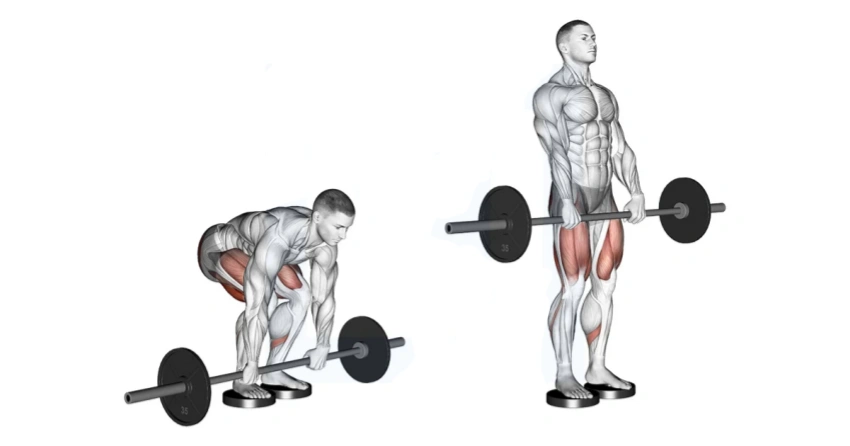
✅ What it is & muscles worked
A deadlift done with a trap bar (hex bar), working your glutes, hamstrings, quads, and lower back. Easier on the spine and more beginner-friendly than a barbell deadlift.
🔧 How to do it
Step inside the trap bar. Grip the handles at your sides. Keep your chest up and back flat, then push through your legs to stand up. Lower with control and repeat.
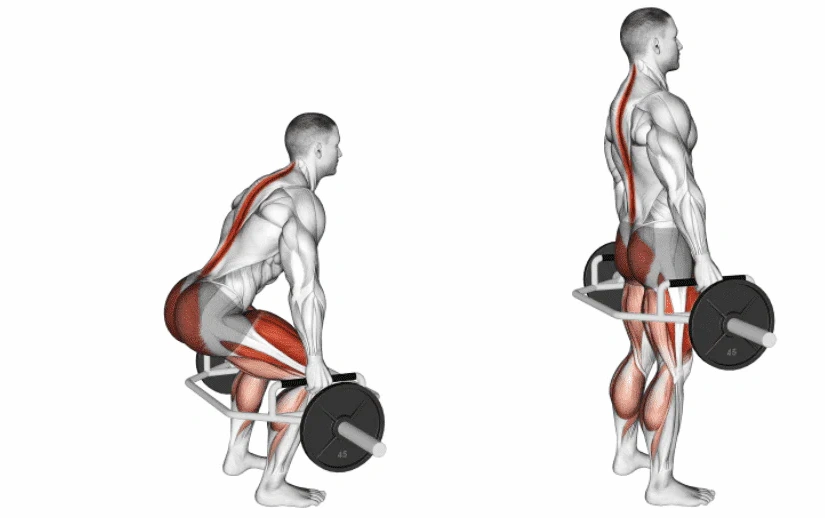
✅ What it is & muscles worked
A wide-stance deadlift that targets glutes, hamstrings, and inner thighs. It reduces the range of motion and puts less stress on the lower back.
🔧 How to do it
Stand with feet wide and toes slightly out. Grip the bar inside your knees. Keep your chest up, push through your heels, and stand tall. Hips and knees extend together.
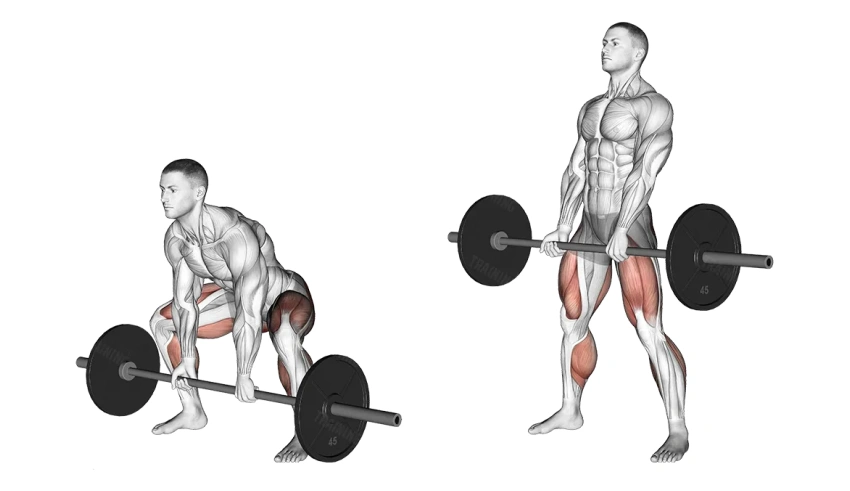
✅ What it is & muscles worked
A simple, beginner-friendly deadlift that works the glutes, hamstrings, and core. Great for home workouts or light days.
🔧 How to do it
Place a kettlebell between your feet. Hinge at the hips, grab the handle, and stand up by driving through your heels. Keep your back flat throughout.
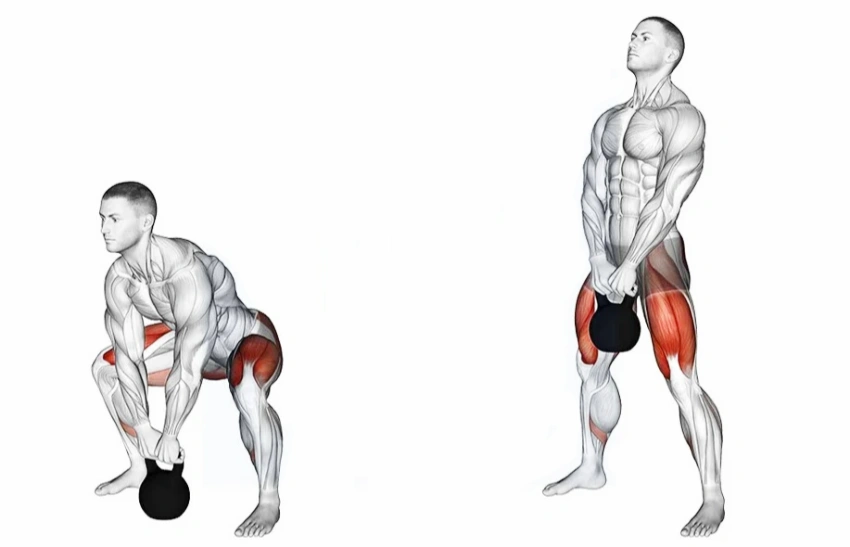
✅ What it is & muscles worked
A versatile version using dumbbells to target glutes, hamstrings, and lower back. Easier to control and great for limited space.
🔧 How to do it
Hold a dumbbell in each hand. Keep them by your sides or in front. Hinge at the hips, lower to mid-shin, then stand back up. Keep a flat back and soft knees.
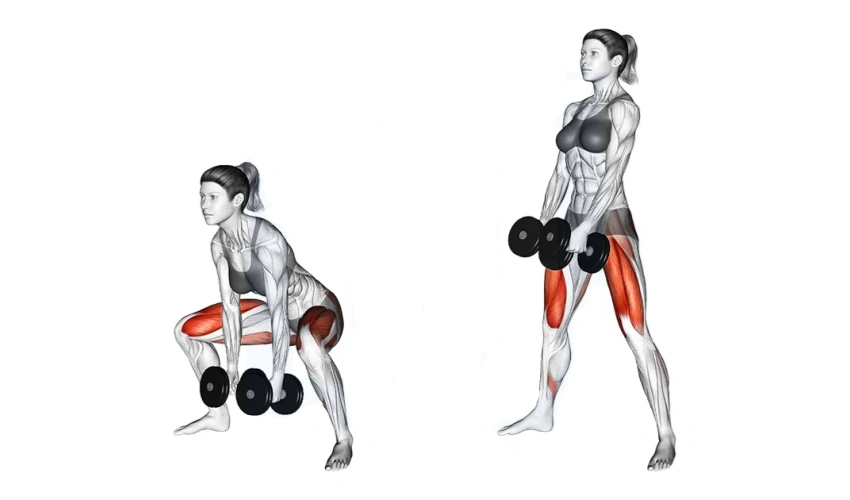
✅ What it is & muscles worked
A non-standing movement focused on glute activation and hip extension. Ideal for building glute strength with minimal spinal load.
🔧 How to do it
Lie on your back (or place upper back on a bench). Feet flat, knees bent. Drive through your heels to lift your hips, squeeze your glutes at the top, then lower slowly.
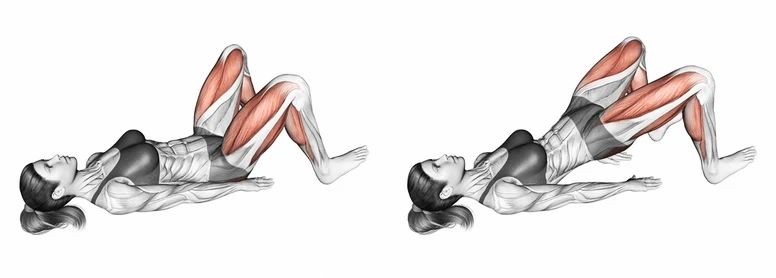
Choosing the right deadlift machine equivalent can make a big difference in your training results. Not every option fits every person — your experience level, injuries, and available equipment all matter.
So instead of guessing, match your situation with the option that makes the most sense for your body and setup:
| Your Situation | Best Options |
|---|---|
| Training at home | Kettlebell Deadlift, Dumbbell Deadlift, Glute Bridge |
| Beginner | Trap Bar Deadlift, Glute Bridge |
| Lower back issues | Glute Bridge, Hip Thrust, Light Dumbbell RDL |
| Returning after time off | Romanian Deadlift, Sumo Deadlift |
| Want to lift heavy | Trap Bar Deadlift |
✅ Quick tip:
Start with 1–2 of these movements, based on where you are right now — not where you “used to be.” Keep it simple.
Let’s keep it real — you don’t need a machine to train like it matters.
These deadlift machine equivalents? They’re simple, solid, and they work. Glutes, hamstrings, lower back — all covered. No waiting around for a machine, no need to fight for space. Just you, some weights, and movements that carry over to real life.
Pick one that fits. Do it clean. Stay consistent.
That’s it.
That’s the point.
Related articles: Can You Deadlift on a Smith Machine
Top Deadlift Substitute for Back-Friendly Training
I’m Jessica Camp, a passionate fitness enthusiast and the creative force behind Inpek Fitness’s content. With over a decade in the fitness industry, I combine my expertise in exercise science with a deep knowledge of commercial gym equipment. I’m dedicated to promoting health and wellness by sharing valuable tips, training techniques, and the latest trends in Pin Loaded Machines, Plate Loaded Machines, Multi Function Gym Machines, Gym Multi, and Free Weights. Whether you’re a gym owner or a fitness enthusiast, my articles are crafted to inspire and empower you to reach your fitness goals. When I’m not writing, I love working out and exploring innovative fitness solutions.
Looking to enhance your gym with premium equipment? Have inquiries or ideas? Complete the form below to engage with our expert team. We’ll work with you to realize your fitness facility goals efficiently and effectively.